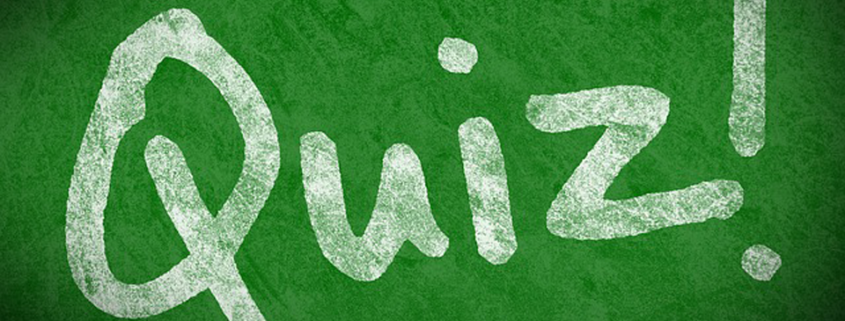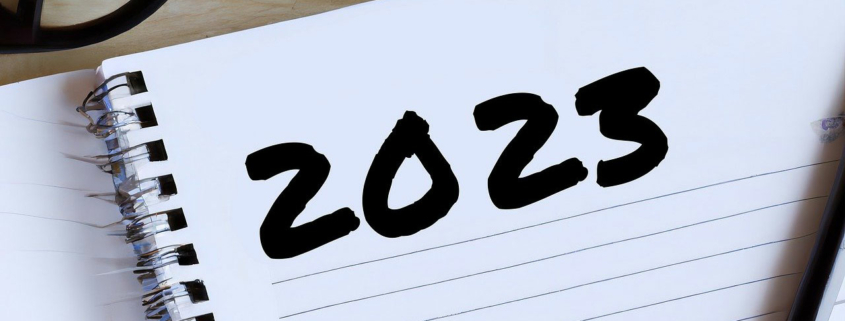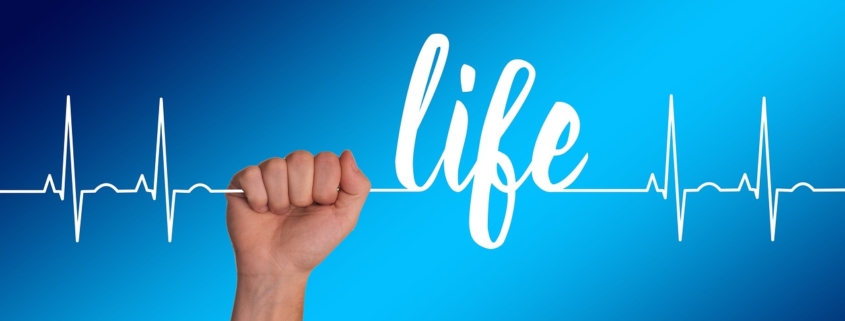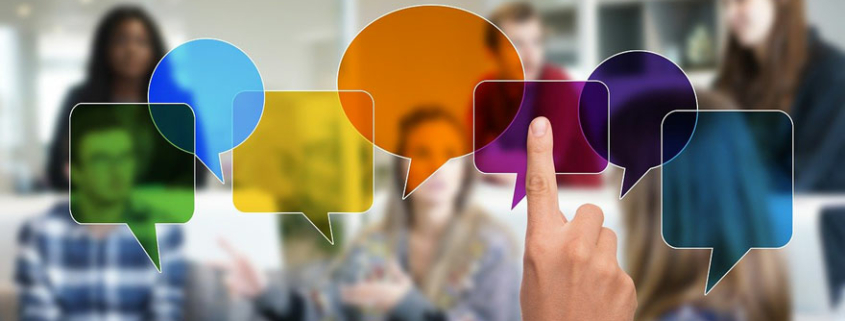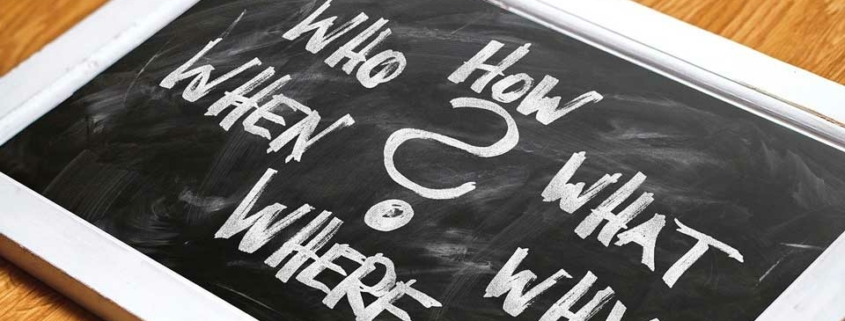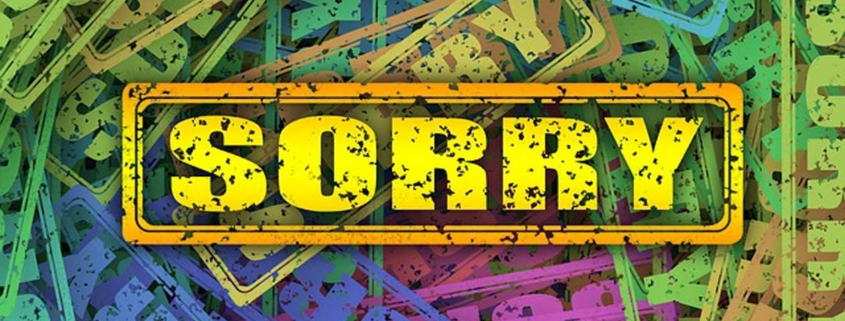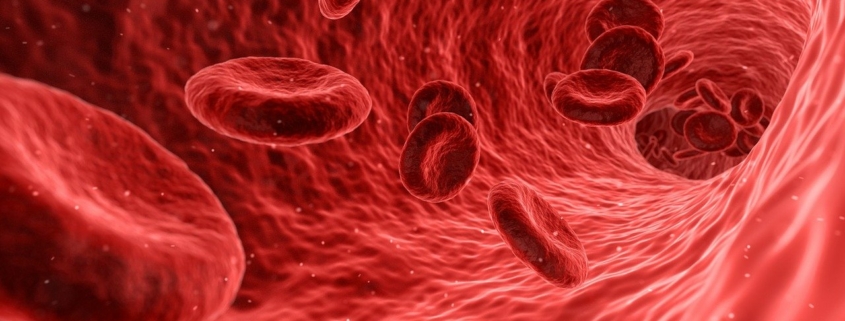It’s time for our summer BrighterBrain® health issue. It’s likely you get more than your share of advice about health; friends, family, and the internet all have their opinions. But what if there was just one thing for you to pay attention to and manage from now on… Interested? If so, this is for you.
Background
In this post, we will discuss inflammation. Unless you lock in on this issue and take action, you will run greater health risks for the rest of your life. Lean in and focus. This is your life we are talking about.
Going back thousands of years, there were perhaps three selection determinants of our survival. We needed the ability to hunt, gather, and efficiently store nutrients to survive times when food sources were scarce. We also had to produce and raise healthy and capable offspring for the next generation. Finally, we needed a robust immune response able to heal injuries and clear bacterial, viral, and parasitic infections to avoid an early death.
Over thirty years ago, I discovered research revealing the interplay between my stress and my immune response. My “ah-ha” moment was realizing that my daily actions were actually regulating something I had taken for granted – my own immune system.
But this issue is about your two immune systems. Yes, you actually have two of them. Your ‘outer’ immune system attacks outside foreign invaders like physical assaults, bacteria, drugs, toxic foods, germs, and viruses by sending healthy white blood cells to fight in the inflamed area. You are exposed to those pathogens daily. Sometimes it’s an accident (like cuts, transmitting sneezes, or bruises) or it may be diet, poor glucose regulation, and other food toxins.
But your ‘inner’ immune system combats threats from within your body. How? As you age, your body begins to accumulate the ‘dead weight’ of damaged, dysfunctional, and unnecessary cells. For example, there are about 30 trillion red blood cells within you, having a lifespan of only 120 days. That means that every four months, your body has used up 30 trillion red blood cells (Freitas, R, 1999). That’s over 60 million red blood cell deaths per minute! Over time, the cellular dead weight just piles up in your body, like trash bags on garbage day. This happens with inactivity, swollen areas, or obesity.
One reason you might look, feel, and act old is because your body is carrying around dead weight. Your inner immune system uses a complex biological process called autophagy (pronounced “aw-toff-a-gee”) to clean your innerbody of the dangerous and excess cellular debris. The rate and quality at which it does this impacts your immune system (Cui et al., 2019). What’s the relevance of this to you?
Every day, as you age, your two immune systems are either: deteriorating or being activated by your purposeful efforts. There are biological rules for how they work (Villani, Sarkizova & Hacohen, 2018). Depending on how you manage your immune systems, you are either increasing your chances for an early death, or not.
How important is your immune system? The CDC website says that in 6% of all COVID deaths, COVID was the sole cause. In 94% of all COVID-19 deaths, there were an average of 2.6 underlying conditions (heart disease, pneumonia, obesity, hypertension, smoking, cancer, etc.). COVID was only the trigger for the cause of death in these patients because their immune system was already compromised. You never want to be in this category.
Let me re-state this another way. The difference between dying of COVID only vs. having COVID plus 2.6 underlying conditions from a compromised immune system is fifteen-fold. And yes, a weakened immune system is linked to chronic illnesses (Fülöp, Dupuis, Witkowski & Larbi, 2016). The list of chronic illnesses includes Alzheimer’s, autoimmune diseases, cancer, cardiovascular issues, Parkinson’s, and tuberculosis.
You now know we each have two immune systems. You know that the underlying conditions are what made COVID a pandemic, not the virus itself. Weaker immune systems lead to long-term inflammation. Stronger immune systems fight off the virus. Let’s unpack what we know, so you can be safe and learn how to foster a robust immune system. (A robust immune system is so important that I work on mine daily.)
The Research
Inflammation is now viewed as the primary driving factor in many diseases, including atherosclerosis, cancer, Parkinson’s, autoimmunity, diabetes, Alzheimer’s, and a major contributor in most age-related conditions. (Prasad, Sung & Aggarwal, 2011). In fact, your brain and your gut are well-connected and talking to each other constantly (Schluter et al., 2020). Because of their key role in your survival, your immune systems are quite sophisticated.
Immune System Disruptors
Central nervous system depressants like alcohol, benzodiazepines, opioids, barbiturates, and other sedatives can impair your immune system function (Piano, 2017). Drugs which suppress immune functioning (there are over 100 of them) can increase risk levels for other diseases. You can hear the disclaimers for these drugs on their TV commercial spots.
Inflammatory Foods
Foods which disrupt your immune system dysregulate your glucose levels. This internal glucose balance is referred to as homeostasis. When we eat sugars (ice cream, cake, pies, artificial sweeteners) or high starch vegetables (white potatoes), glucose levels go up. If you’re a fan of sugar (pastries, treats, cakes, pies, candy bars, etc.) or starchy fruits (e.g. bananas) and carbohydrates (chips, rice, pastas, etc.), glucose levels go up. If you eat a diet high in carbs (potato, vegetable oils, rice, and pasta), you may be triggering more glucose than your body needs for energy. When you consume excess glucose (that which is unneeded for daily energy), it gets stored as fat.
My personal rule is, “I splurge my urge once a week.” For me, that could happen with an evening meal (e.g. splurge with chips with my healthy guacamole). Maybe once a month, I have a breakfast splurge (my favorite splurge is waffles with healthy blueberries, cinnamon, and whipped cream.) Outside of a once-a-week splurge, I keep my glycemic levels right where I like them: LOW, LOW & LOW!
Higher glucose variability and higher/more peak glucose levels are each independently associated with accelerated onset of disease and death, even in non-diabetics. Higher glucose variability (from sugars) in non-diabetics is associated with an increased risk of cardiovascular disease, Alzheimer’s disease, frailty, cardiovascular death, cancer death, and death from any cause, compared to lower glucose variability.
Why have so many died from COVID? In many cases, there was a constant state of low-grade inflammation, especially present in overweight people. Obesity weakens the immune responses, including those launched by T cells, which can directly kill infected cells. Yet, obesity is also a state of chronic inflammation that promotes the development of insulin resistance and diabetes (systemic) for over 30% of the adult population in the USA (Izaola, de Luis, Sajoux, Domingo & Vidal, 2015).
In the vast majority of cases, today’s ‘normal’ individual is tomorrow’s diabetic patient, unless something is done to detect and prevent the rise of inflammation. Not only that, but prospective studies also demonstrate a continuous increase in the associated risk for cardiovascular disease, cardiovascular death, and deaths from all causes.
Practical Applications
Here’s one way to help your immune system. Not long ago, I said, “Woo-hoo! I’m getting the COVID vaccine.” The prevailing national ‘push’ was to get everyone fully vaccinated (which I am now.) Was I helping my innate immune system? Yes, that system is likely better. Now, let’s see what else we can do.
Remember there are two types of immune systems. Your ‘outer’ immune system attacks outside foreign invaders. Your ‘inner’ immune system combats threats from within your body. The approach we are going to advocate is the following three simple tools.
Step One: Outsmart the foreign invaders
The ugly, unnecessary, and scary… Reduce inflammatory foods. These foods harm your gut: highly processed foods and foods that have a high concentration of fat or sugar (e.g., simple carbohydrates, chips, rye cereal, soft drinks, ice cream, fruit jams or jellies.) Avoid factory farmed, grain-fed red meats. Start eating less processed oils (canola or soy), breads, chips and crackers. If it comes in a box, can, or jar be cautious and eat less of it.
Eat well and treat your gut well. Over 70% of your entire immune system is in your gut. Eating right will support your healing. Start with Kefir, unprocessed yogurt, and sauerkraut. Each provide a different variety of gut probiotic bacteria. Fresh produce, including grapes, cabbage, peaches, peppers, and spinach are known to harbor large, healthy bacterial populations. Broccoli (steam lightly, add a sash of honey and mustard seeds) has sulfurophane, one of the best antioxidants on the planet. If you dislike broccoli, go to Amazon and purchase Avmacol® tablets.
Eat the good fats. Be sure to include good fats in your diet to support autophagy. Good fats include avocados, cold water fish (wild salmon is a good option), eggs, bacon, olives, and olive oil. Enjoy high fat nuts like walnuts, pecans, and macadamia nuts. Eat healthy nut butters (like almond or macadamia). Eat foods that are high in soluble fiber, such as flaxseed, beans, apples, oats, and oat bran. Weekly I will eat 90% of everything you read from this list. Plus, the following spices are highly anti-inflammatory: ginger, black pepper, capsicum, cinnamon, and turmeric. Supplement with Omega 3 from Nordic Naturals. All are available from Amazon. I take each of these daily.
Step Two: Move your body
The good news is you can trigger the autophagy process within the next five minutes. And all it takes is breaking a sweat. Movement is a great stress manager. It’s like a vaccine, which in small doses can ‘inoculate’ you against stressors. Also, manage your stress levels by boosting oxygen activity (to temporarily stress your body), and deep breathing to oxygenate your body.
Exercise cleans out the ‘dead weight’ in organs that keep your metabolism working properly (He & Sumpter, et al. 2012). Learn to exercise like your ancestors. I do a 10-12 minute workout everyday. What works best for autophagy is short-duration, but high intensity workouts. There’s a clip of these short, intense exercises at youtube.com/watch?v=ub0eov_MxJs
By the way, as long as you’re moving your body, do some of it outdoors. If you spend a lot of time indoors, get out now to walk, sit in a park, breath air. Why? The outside air is packed with healthy bacteria you would never find indoors.
Step Three: Take out the trash
Move your dead cells out of your body. You can do this two ways; change your eating or do ICR (Intermittent Caloric Restriction). Let’s start with what you eat. Trash the low-fat advice. Get most of your calories from fats in the following list of plant-based fats: coconut oil, avocados, and dairy. Yes, I grow coconuts, but in between annual harvests I buy Amazon’s Nutiva Organic Coconut Manna. I eat avocados year round, usually 3-4 times a week. Or, you may prefer dairy: Grass-fed cow’s milk, grass-fed half and half, and grass-fed heavy cream. Of those three, I admit to a big bias for coconut, which I often turn into super health bars. Now, let’s address when you eat.
Intermittent Caloric Restriction or Fasting. Ease into it with small steps. Close up the kitchen after dinner. No more TV snacking. Ever. After a week or two, lengthen your fast. You eat only during a six hour window. Eat a healthy breakfast and lunch, or a healthy lunch and dinner. For example, eat one meal at 11 a.m. and a second before 7 p.m. Or eat breakfast at 7 a.m. and your lunch before 1 p.m. Do this for one day a week. Then add another, then another. Yes, you will lose weight doing this. I did this for 5 days each week (3 months), two years ago (I lost 10 pounds). Doing this plan gives your body an 18-hour fast every single day. Just writing this article reminded me to restart this ‘dead cell-clearing task’ to help my body stay healthy.
Now for my biggest fear. You have just heard me saying, “Eat different, exercise, and take out the trash.” Your easiest bias to activate would be the familiarity bias (“Yup; heard this before. Nothing new here. Everybody go home”). If you do, I am sorry; I have failed you. I failed to activate your choice of playing the ‘long game.’ Biases are shortcuts to save time and are often about the ‘short game.’
You see, life goes by so fast that many would say, “Live in the moment, smell the roses since life is short.” And they’re right. Life is about savoring the smell of fragrant flowers, eating a great meal and enjoying hugs from friends and family.
But most everything in life that’s worth having over a lifetime requires the ‘the long game,’ too. This includes great health, a solid retirement, bills paid off, great friends, and a loving partner. Learn to do the small things today that cost you almost nothing (except maybe a moment of satisfaction) in the short haul.
But over the long haul, you’ll have a chance to extend the number of sunsets you’ll see, have the joy of far more hugs, savor more extraordinary meals you cook or find in a great restaurant.
So, what’s it going to be? Complain about your body for decades, dying before your time, or reduce inflammation and extend your healthspan? Choose right now. Tell me and your family what you decided on. Then begin.
Eric Jensen
CEO, Jensen Learning
Brain-Based Education
CITATIONS:
Buscemi S, Verga S, Cottone S, Azzolina V, Buscemi B, Gioia D, Cerasola G. (2009). Glycaemic variability and inflammation in subjects with metabolic syndrome. Acta Diabetol. 46, 55-61.
Cui B, Lin H, Yu J, Yu J & Hu Z. (2019). Autophagy and the Immune Response. Adv Exp Med Biol. 2019;1206:595-634.
(Freitas, R, 1999). Nanomedicine, Volume I: Basic Capabilities Chapter 8. Landes Bioscience, Georgetown, TX, 1999.
Fülöp T, Dupuis G, Witkowski JM, Larbi A. (2016). The Role of Immunosenescence in the Development of Age-Related Diseases. Rev Invest Clin. 68, 84-91.
He C, Sumpter R JR., et al. (2012). “Exercise induces autophagy in peripheral tissues and in the brain.” Autophagy. 8,1548-51.
Herman, M. A., & Kahn, B. B. (2006). Glucose transport and sensing in the maintenance of glucose homeostasis and metabolic harmony. The Journal of clinical investigation, 116(7), 1767–1775.
Izaola O, de Luis D, Sajoux I, Domingo JC, Vidal M. (2015). Inflammation and Obesity. Nutr Hosp. 31,2352-8.
Netea, M. G., Balkwill, F., Chonchol, M., Cominelli, F., Donath, M. Y., Giamarellos-Bourboulis, E. J., … Dinarello, C. A. (2017). A guiding map for inflammation. Nature immunology, 18,826–831.
Piano MR. (2017). Alcohol’s Effects on the Cardiovascular System. Alcohol Res. 38,219-241.
Prasad, S., Sung, B., & Aggarwal, B. B. (2011). Age-associated chronic diseases require age-old medicine: role of chronic inflammation. Preventive medicine, 54 Suppl (Suppl), S29–S37.
Schluter J, Peled JU, Taylor BP, Markey KA, Smith M, Taur Y, Niehus R, Staffas A, Dai A, Fontana E, Amoretti LA, Wright RJ, Morjaria S, Fenelus M, Pessin MS, Chao NJ, Lew M, Bohannon L, Bush A, Sung AD, Hohl TM, Perales MA, van den Brink MRM, Xavier JB. (2020). The gut microbiota is associated with immune cell dynamics in humans. Nature. 588, 303-307.
Villani AC, Sarkizova S, Hacohen N. (2018). Systems Immunology: Learning the Rules of the Immune System. Annu Rev Immunol. 26, 36:813-842.

